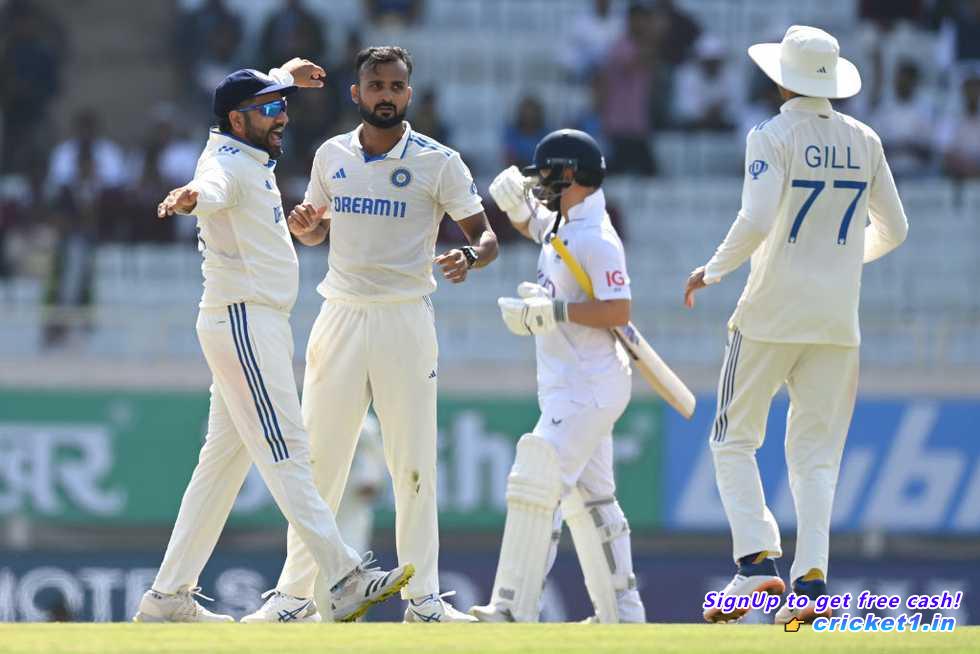
As India gears up for a red-ball reboot following an extended period of short-form cricket, the 2024 Duleep Trophy offers a crucial launchpad for the next ten Test matches scheduled over the next four and a half months. The first round, commencing on September 5, provides an opportunity for India’s domestic talent to adjust to the rhythms of the longer format and make a swift impression.
The composition of India’s Test team is largely settled across most departments, including the back-ups. However, a few issues remain unresolved, primarily in the fast bowling department, which is currently the most fragile sector of the team. Mohammed Shami’s injury and prolonged recovery since his exploits at last year’s ODI World Cup has left the team searching for a solid third seamer. Initially, Mukesh Kumar occupied this role during the series against England earlier this year. However, after a lackluster performance in Visakhapatnam, Akash Deep took over, offering more impact in his one Test appearance.
The position of the third or fourth seamer is still open for competition and will be a key focus in the Duleep Trophy. Apart from Mukesh and Akash, several other pacers, like Prasidh Krishna—who missed the recent Maharaja T20 Trophy due to injury and will also miss the opening match of the Duleep Trophy—are in contention. Other aspirants include Khaleel Ahmed, who is still to establish his credentials as a red-ball bowler, and Avesh Khan, who is on the cusp of breaking into the team. Additionally, promising talents like Yash Dayal, Vidwath Kaverappa, and Vyshak Vijaykumar, who have excelled in domestic cricket, await opportunities at a higher level. Other noteworthy names in the mix include Sandeep Warrier, Tushar Deshpande, Harshit Rana, and Navdeep Saini, each bringing unique skill sets to the table.
With such a wide array of options, the job of the selectors and the team management to find the right mix of pacers who can perform well both in India and overseas will not be easy. As Paras Mhambrey, India’s former bowling coach, pointed out, “There’s a significant amount of Test cricket ahead. We’ll need a pool of bowlers to get through the ten Tests, especially since we’ll need to rest key players like Bumrah or Siraj at some point. It’s encouraging to see some promising pacers close to selection.”
Mhambrey emphasizes the importance of evaluating these bowlers across different phases of the game. “On flatter wickets, assessing how these bowlers perform in their third or fourth spells provides a clear picture in terms of fitness, game understanding, and reading.
. We need to shortlist six or seven quality fast bowlers we can rely on and rotate,” he says. “Most of these pacers will also be playing short formats, so the exercise requires careful consideration.”
Shortlisting the ideal candidates will be a meticulous process, especially given that the four Duleep Trophy teams consist of 17 frontline pacers. With the conditions in Bengaluru and Anantapur, team management and captains may opt for line-ups with no more than two seamers. However, there might be room for rotation even within these teams, especially given India’s senior team’s requirements.
“If a specific bowler is in the scheme of things, selectors can have a conversation with the captains, suggesting to bring the bowler on at different phases, like after lunch or at the end of the day’s play to see how they handle those situations,” Mhambrey explains. This strategy isn’t only about initial selection but also involves preparing bowlers for tours where conditions are different—such as the upcoming tour to Australia in a little over two months.
While only Navdeep Saini among the 17 pacers has experienced red-ball cricket in Australian conditions, Mhambrey outlines the qualities needed for success there. “In India, you won’t often play more than two seamers because of the pitches. But in Australia, the conditions require making the most of the first 30-35 overs with the new ball. Bowlers need to have the pace and the ability to reverse swing,” he observes.
Mhambrey expresses a specific interest in pacers like Prasidh Krishna. “Prasidh has been recovering from a quadriceps injury and will miss the opening game, but if he regains form, he can offer something different with his bounce.” He adds that left-arm pace options like Khaleel, Dayal, and Arshdeep will also be scrutinized during the Duleep Trophy.
Immediate selection solutions, such as the upcoming series against Bangladesh, might also hinge on current form. Mhambrey cites Akash Deep’s surprise call-up for the England series as an example of how recent performances can fast-track players into the national team.
As India prepares for an intensive red-ball season, the Duleep Trophy will be the proving ground for many of these pacers. Those who perform well will not only enhance their chances of making it to the national team but will also provide the selectors with a clearer picture of who can be relied upon to carry the pace attack forward in different conditions around the world.

